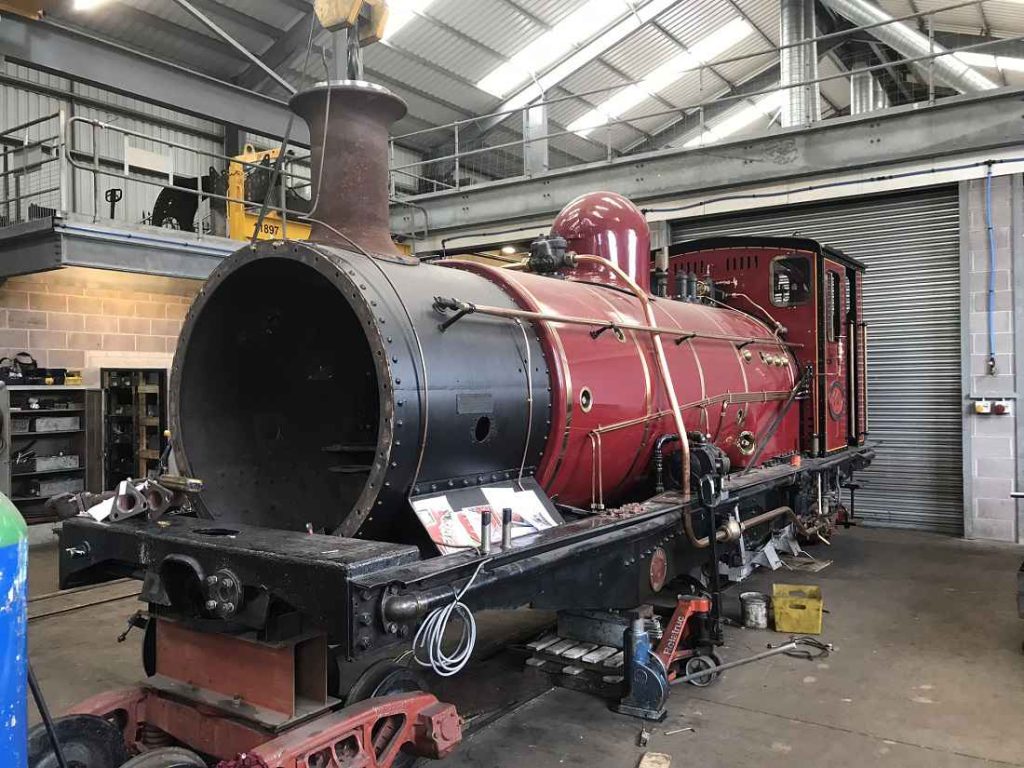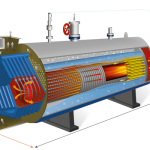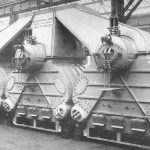As regards the use of those varieties of water-tube boilers which give the greatest power for their weight and the space occupied, a very considerable extension took place in Great Britain in 1893 by the demand for the class of small vessels of great speed known as ‘torpedo-boat destroyers.’ Many varieties have since that date been fitted and tried in such vessels with satisfactory results, and they have now entirely superseded the locomotive type, which had previously been mostly used for such purposes.
An example of the results obtained in sister vessels with locomotive and water-tube boilers may be given in the trials of ‘Havock’ and ‘Hornet,’ both built and engined by Messrs. Yarrow & Co., the ‘ Havock ‘ with locomotive boilers having copper fire-boxes similar to that illustrated in Fig. 44, and the ‘Hornet’ with water-tube boilers similar to Figs. 65 and 66.

Having now briefly descrlbed the history of the revival of water-tube boilers in recent years, we will proceed to the detailed consideration of these boilers, their advantages lying in their lightness for the power generated, the capacity of raising steam quickly owing to the small quantity of water carried, and their comparative freedom from leaky tubes, the joints being more protected from the direct impact of flame.
The Belleville boiler.
This type of water-tube boiler is shown in Figs. 49 and 50, and is of more extensive use on board large ships than any other. It consists essentially of a top steam cylinder and a lower water chamber, with a series of straight zigzagged tubes of comparatively large diameter connecting them. There is an external return water pipe on each side, connecting the ends of the top steam chamber with the lower water chamber. The zigzag generating tubes are inclosed in a sheet-iron or steel casing, which confines the flame and gases generated from the combustion of the coal on the fire-bars. ……….




Comments are closed